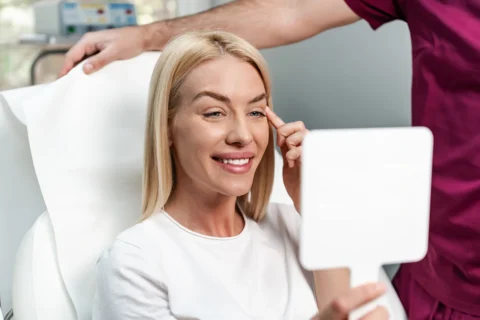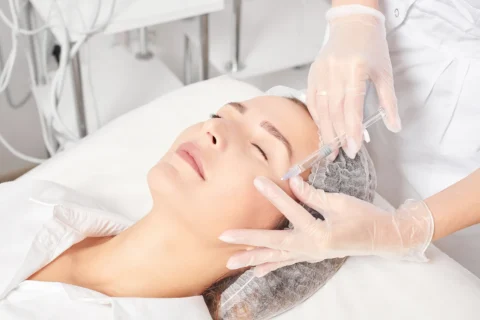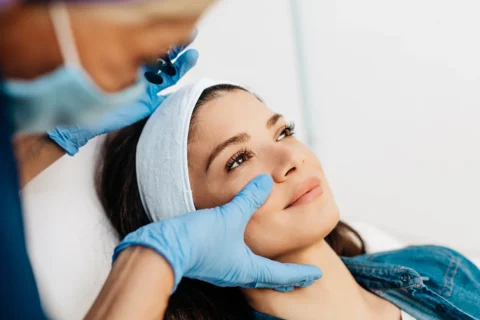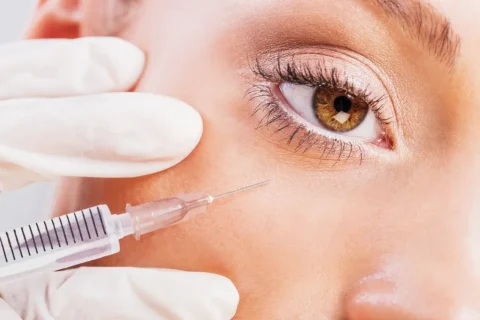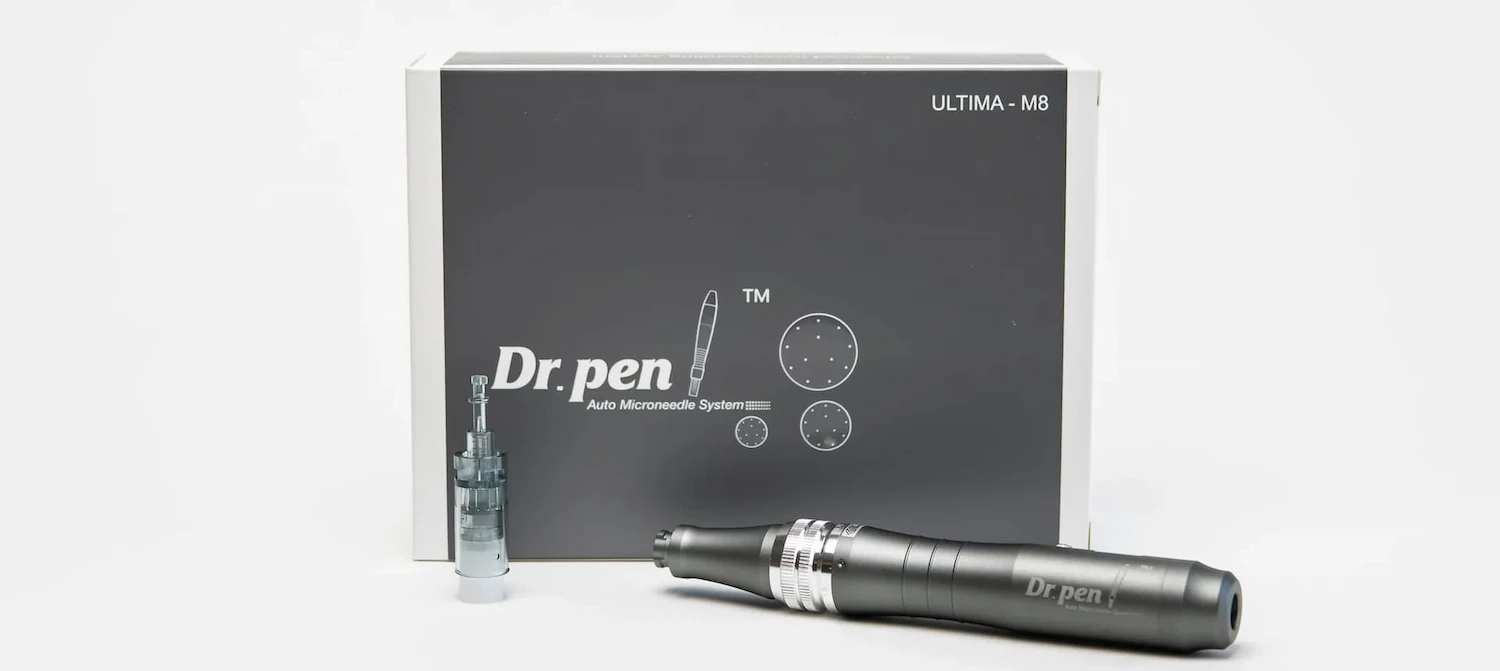Take Microneedling Treatments to the Next Level with Polynucleotides
Polynucleotides microneedling combines microneedling and polynucleotides to improve skin quality. This advanced treatment uses tiny needles and genetic compounds to reduce wrinkles, smooth texture, fade scars, and rejuvenate the skin’s appearance.
Microneedling has become one of the most popular minimally invasive skin rejuvenation treatments. By creating microscopic injuries in the skin, microneedling stimulates collagen production and improves texture, tone, fine lines, and scars.
Now, the addition of polynucleotides is taking microneedling to the next level. Polynucleotides microneedling harnesses the power of these unique compounds to enhance and accelerate microneedling benefits.
Learn how offering polynucleotide treatments can help your practice achieve better skin rejuvenation results. Visit Face Med Store today
What are Polynucleotides?
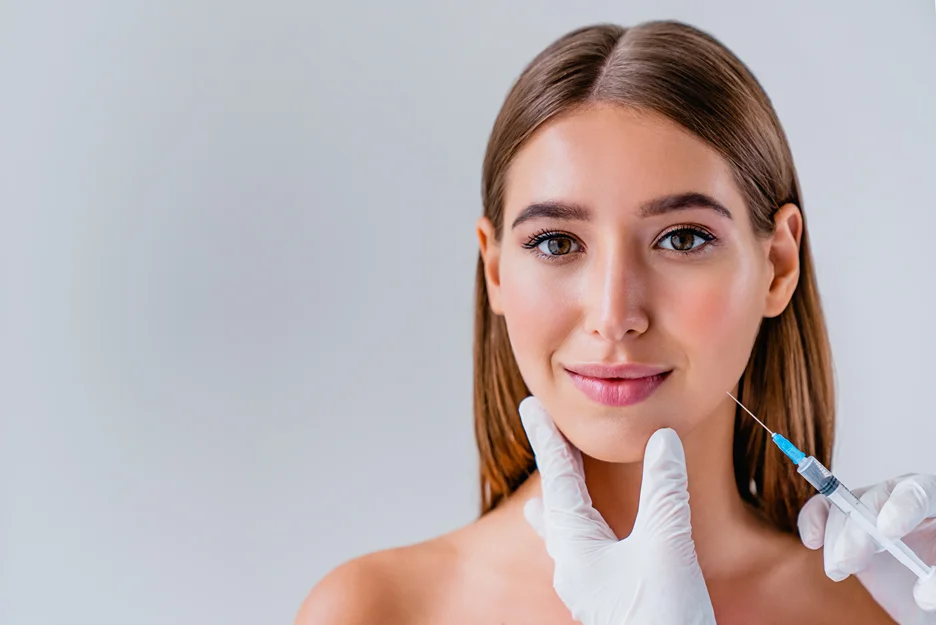
Polynucleotides are chains of nucleotides linked together by phosphodiester bonds. While that may sound complex, polynucleotides are simply fragments of nucleic acids. They are derived from the DNA of salmon, providing a concentrated source of genetic material for the skin.
Polynucleotides deliver nutrients directly to cells to stimulate regeneration and repair processes. They support fibroblasts and promote collagen and elastin synthesis, improving skin quality from the inside out. Polynucleotides also enhance hydration, protect against free radical damage, and calm inflammation.
How Polynucleotide Treatments Work
When applied topically or injected, polynucleotides send signals to cells to ramp up production of collagen, elastin, and hyaluronic acid. This plumps the skin, softens lines and wrinkles, and creates a more youthful appearance.
Polynucleotides also aid in cell metabolism and tissue repair. They provide building blocks for new cells and cellular structures like lipid barriers. This strengthens the skin and locks in moisture.
Polynucleotide treatments enhance epidermal thickness, smooth texture, and skin radiance. Patients see improved firmness, elasticity, and a reduction in wrinkles, pores, and skin imperfections.
What is Microneedling?
Microneedling is a technique that uses tiny needle pins to create controlled micro-injuries in the skin. This stimulates the body’s natural healing processes, like collagen and elastin production. The micro-injuries also allow for deeper penetration of skincare ingredients.
During a microneedling treatment, a device with 12-100 tiny needles is moved over the skin to create thousands of microscopic punctures. These channels trigger collagen synthesis and remodelling for smoother, firmer skin.
Microneedling is used to improve skin concerns like fine lines, enlarged pores, uneven texture, hyperpigmentation, and acne scars. It is safe for all skin types.
How Polynucleotides Microneedling Work
Polynucleotides microneedling combines these two modalities using specialized techniques and devices. Polynucleotides are applied topically or injected during the microneedling process for optimal absorption.
This approach provides superior results compared to each treatment alone. Microneedling enables deeper penetration of polynucleotides for enhanced skin rejuvenation. Meanwhile, polynucleotides strengthen the microneedling benefits.
Together, polynucleotides and microneedling offer advanced skin renewal, regeneration, and repair.
What are the Benefits of Polynucleotides Microneedling?
Polynucleotides microneedling offers a wide range of aesthetic benefits:
- Improved texture and skin tone
- Increased collagen and elastin production
- Enhanced hydration and elasticity
- Plumper, more supple skin
- Softened appearance of fine lines and wrinkles
- Reduction of pore size
- Lightening of hyperpigmentation
- Diminished appearance of acne scars and other scars
- Decreased redness and inflammation
- Overall skin rejuvenation
By stimulating fibroblasts and regenerative processes, polynucleotides microneedling leads to dramatic improvements in skin quality and youthfulness.
See how combining these modalities can provide advanced skin renewal results not achievable with either treatment alone. Checkout our products
What Skin Concerns Can Polynucleotides Microneedling Address?
Polynucleotides microneedling can improve a wide variety of skin concerns through its collagen-boosting, regenerative effects:
| Aging Skin and Wrinkles | Diminishes fine lines, crow’s feet, forehead creases, marionette lines, nasolabial folds, and other wrinkles. Smooths and tightens mature skin for a youthful appearance. |
| Acne Scars and Other Scarring | Activates fibroblasts and remodels scar tissue to improve shallow atrophic acne scars. Reduces the appearance of surgery scars and traumatic scarring. |
| Hyperpigmentation and Uneven Skin Tone | Regulates melanocyte activity and exfoliates pigmented skin cells, leading to a brighter, more even complexion by fading sun spots, melasma, and post-inflammatory hyperpigmentation. |
| Rosacea and Facial Redness | The anti-inflammatory action calms redness and flushing from rosacea. Reduces visible blood vessels and symptoms of rosacea. |
| Dull, Dry, or Dehydrated Skin | Microneedling hydrates skin by creating micro-channels, while polynucleotides strengthen the barrier function to lock in moisture. Restores hydration and glow. |
| Under-Eye Circles and Puffiness | Thickens and smooths the delicate eye area, minimizing dark circles and puffiness. Improves tone and firmness for a refreshed and wide-awake appearance. |
| Enlarged Pores | Physically reduces pore size by stimulating collagen to tighten and shrink pores. Polynucleotides enhance pore-refining effects for clearer-looking skin. |
Which Areas of the Body Can Be Treated with Polynucleotides Microneedling?

Polynucleotides microneedling is safe for:
- The face
- Around the eyes, lips, and mouth
- Neck and décolletage
- Backs of the hands
- Scalp and hairline (potential for hair regrowth)
With minimal downtime, polynucleotides microneedling can address signs of aging and sun damage on exposed areas like the face, neck, and hands.
How are Polynucleotides Administered?
There are two main techniques:
- Topical application after microneedling: The polynucleotides solution is massaged into the skin using gentle pressure to optimize absorption through the microchannels. This method is less invasive.
- Application during microneedling: Using specialized equipment, polynucleotides are delivered intradermally through the microneedling device tip during the treatment. This enhances delivery to the deeper dermal layers.
For optimal results, a combination approach is often used.
What is the Treatment Duration?
A single polynucleotides microneedling session typically takes 60-90 minutes based on the size of the area being treated. The face can be treated in 60 minutes or less. Larger areas like the décolletage may take up to 90 minutes.
How Many Sessions Are Needed?
Most patients achieve significant improvements after 3-6 polynucleotides microneedling sessions spaced 4-6 weeks apart. Maintenance sessions every 6-12 months help sustain results.
The ultimate number of sessions depends on the patient’s goals, skin condition, and response to the treatment. You can customize plans during your consultation.
Can It Be Combined with Other Aesthetic Treatments?
Yes, polynucleotides microneedling complements other treatments beautifully, including:
- Laser skin resurfacing: Polynucleotides support healing and amplify laser benefits.
- Chemical peels: Polynucleotides enhance penetration for greater impact.
- Ultherapy: The combination targets firmness and lifts lax skin.
- IPL and BBL: Polynucleotides help treat rosacea, acne, and pigmentation for optimal results.
Discover opportunities to provide patients with enhanced benefits by pairing with other treatments you offer. Check our products today
Are There Any Side Effects?
Polynucleotides microneedling is very well tolerated. Possible side effects include:
- Mild redness, swelling, pinpoint bleeding (Lasts 24-48 hours)
- Temporary dryness, flaking, or peeling (Resolves within 72 hours)
- Minor bruising (Uncommon and fades within 5-7 days)
- Irritation or infection (Rare when proper protocols are followed)
- Allergic reaction (Highly unlikely but possible)
Proper aftercare minimizes risks of complications. Most side effects are temporary and subside quickly.
What is the Downtime?
Some redness and swelling is expected for 24-48 hours after polynucleotides microneedling. Most patients can return to normal activities immediately. However, you’ll want to avoid strenuous exercise for 24 hours post-treatment.
Use mineral makeup to conceal mild redness, if desired. More significant procedures may require 72 hours of downtime.
Who is a Good Candidate for Polynucleotides Microneedling?
Polynucleotides microneedling can benefit:
- Those seeking overall skin rejuvenation and anti-aging benefits
- Patients wishing to improve texture, tone, wrinkles, and pores
- Individuals dealing with acne scarring or other types of scarring
- People looking to reduce hyperpigmentation and sun spots
- Anyone wanting to improve the appearance of rosacea or redness
This treatment is suitable for most skin types, genders, and ethnicities. However, microneedling is not recommended for:
- Pregnant or breastfeeding women
- With active skin infections or open wounds
- Those who have a history of keloid scarring
- Those who have certain autoimmune conditions
- Those who have allergies to fish or seafood
Your provider will review your medical history before proceeding.
Conclusion
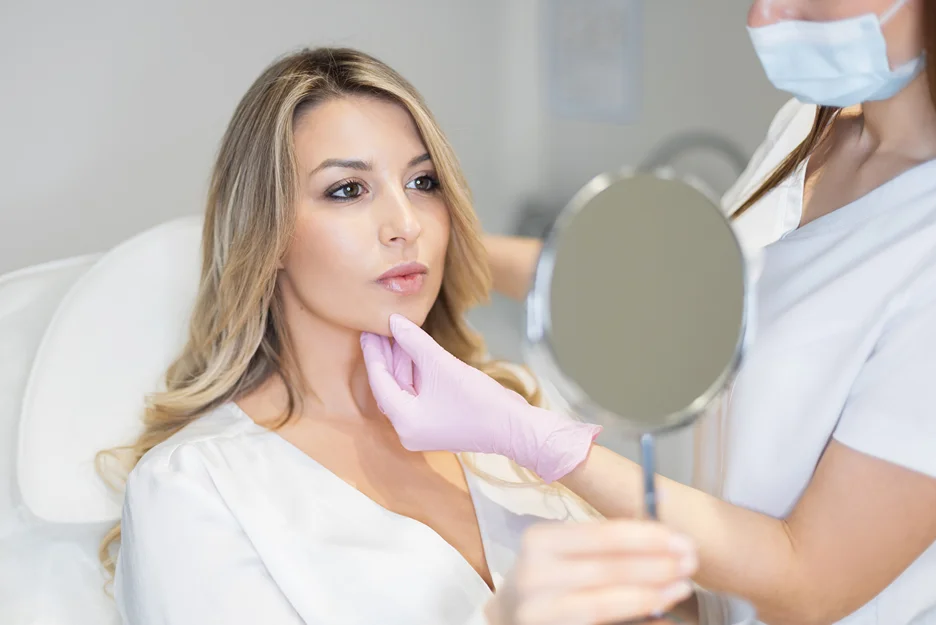
Polynucleotides microneedling is an innovative anti-aging treatment that helps patients achieve glowing, youthful skin. By expertly combining microneedling with polynucleotide solutions, providers can offer superior improvements in tone, texture, firmness, and skin quality.
This advanced technique rejuvenates the complexion while visibly minimizing signs of aging and sun damage. With a skilled practitioner, low downtime, and outstanding results, polynucleotides microneedling represents the future of next-level skin rejuvenation.
